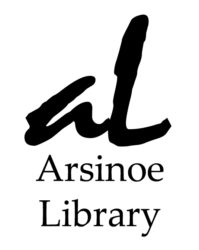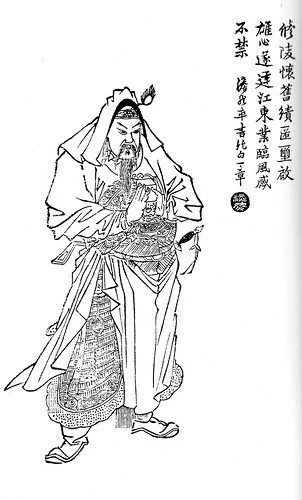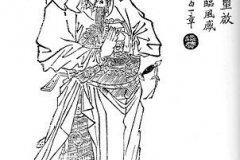Lifespan: (155-191), died at age 36. Age 34 when Dong Zhuo seized the Imperial government (189).
Birth/Death place: born in Fuchun (modern Fuyang, Zhejiang). Died on campaign against Liu Biao’s forces at the Battle of Xiangyang.
Sun Jian, courtesy name Sun Wentai, was a warlord at the end of the Later Han period (25-220) and father of both Sun Ce and Sun Quan, the eventual founder of the Wu dynasty (222-280), one of the Three Kingdoms (220-280).
Sun Jian is a pivotal character in the first part of the novel in the conflict with The Tyrant, Dong Zhuo. As the lord of Changsha, south of the Great River, we are first introduced to him in the suppression campaigns against the Yellow Scarves. He is always shown as a valorous and pugnacious commander and usually wins his battles with skill and strategic ability. His defeat at Si River Pass in the epic was due more to Yuan Shu’s plotting and betrayal of the Confederate clause than to Sun Jian’s generalship. His one fatal error was in underestimating Liu Biao, which costs him his life on the battlefield.
Sun Jian came from Fuchun (modern Fuyang, Zhejiang) and had been commander (sima) in Wuxian, where he participated in the suppression of the rebellion of Xu Chang. When the Yellow Scarves uprising shook the dynasty, he assembled a local army and took part in the campaign of Zhu Jun against the rebels. Sun Jian was able to conquer the city of Wancheng (modern Nanyang, Henan), where the rebels had taken shelter. He was later appointed court gentleman for consultation (yilang), then governor (taishou) of the commandery of Changsha. For his military merits he had accumulated over the years, he was given the title of Marquis of Wucheng.
When Dong Zhuo usurped the central government of the dynasty, he became virtually independent as regional inspector (cishi) of the province of Jingzhou and governor of Nanyang. He allied with the warlord Yuan Shu. As a military commander, Sun Jian proved to be very competent so that Dong Zhuo, after being defeated several times by Sun Jian’s troops, asked for peace. Dong Zhuo even offered several high posts to Sun Jian’s relatives, but Sun declined.
Sun Jian’s main battle with Dong Zhuo’s forces was mentioned in the epic at Hulao Pass (Tiger Cage Pass), but there is no historical record of any engagement taking place at Hulao Pass (Tiger Cage Pass) during that period. The Book of Later Han records a battle that the warlord Sun Jian had with Dong Zhou’s forces in the mountainous area south-east of Luoyang in the Yangren region. Sun Jian’s biography in the Sanguozhi also stated that Sun Jian defeated Dong Zhuo’s army at Yangren (believed to be near present-day Wenquan, Ruzhou, Henan) and beheaded its commander Hua Xiong (Chen c. 280, vol. 46)(Sima 1084, vol. 60).
Dong Zhuo’s biography in the Book of the Later Han (Houhanshu) stated that Lu Bu was defeated in battle twice by Sun Jian. The first time was at Yangren, when Dong Zhuo sent Lu Bu and Hu Zhen to attack Sun Jian. Lu Bu and Hu Zhen could not get along with each other, leading to disorder in their army, so Sun Jian used the opportunity to attack them and forced them to retreat. The second time was in Luoyang, where Dong Zhuo personally led an army to engage Sun Jian’s forces in the area where the tombs of the Han emperors were located. Dong Zhuo was defeated and he retreated. Sun Jian then entered Luoyang’s Xuanyang Gate, where he attacked Lu Bu and drove him back (Houhanshu, vol. 72)(Zizhi Tongjian, vol. 60). Luo Gaunzhong and later authors probably confused the battle with the historical Hulao Pass that guarded the Eastern approach to Luoyang along the Yellow River and was a common attack vector of later invaders of China.
Sun Jian’s biography in the Sanguozhi did mentions an incident during these battles where the pugnacious commander almost lost his life. In the epic there was an incident about Sun’s scarf as he fled a battle were his camp was overran. The historical account differs, and it did not involve Hua Xiong. It stated that when Sun Jian garrisoned at Liangdong, he came under heavy attack by Dong Zhuo (led by Xu Rong) and he attempted to break out of the encirclement (Zizhi Tongjian, vol. 60). He was wearing a red scarf then, so he took it off and passed it to Zu Mao. Dong Zhuo’s men recognized the scarf and pursued Zu Mao, while Sun Jian took another path and escaped. Zu Mao became tired so he dismounted, tied the scarf to a half-burnt pillar, and hid in the bushes nearby. Dong Zhuo’s men approached the pillar, surrounded it, and left when they saw that it was just a pillar. Zu Mao was not killed, but he was not mentioned further in the history (Chen c. 280, vol. 46). In 190 Dong Zhuo, threatened by his adversaries, burnt down the capital Luoyang and forced the imperial court to move to the old capital Chang’an (modern Xi’an, Shaanxi) in the far west. A year later, Sun Jian defeated the troops of Dong Zhuo outside of Luoyang, forced Lu Bu to retreat and was able to seize the remaining imperial seals of the Han dynasty. Shortly after, Sun Jian was entrusted with the campaign against Liu Biao. He was killed during battle against the troops of Huang Zu (Battle of Xiangyang, 191).
Sources:
Chen Shou, et al. (c. 280). Sanguozhi “Records of the Three Kingdoms”. Additions were added by Pei Songzhi (c. 400), named: Sanguozhi zhu “Annotations to Records of the Three Kingdoms”
Fan Ye, et al (c. 450). Hou Hanshu “Book of the Later Han”, a.k.a. “History of the Later Han”
Sima Guang, et al. (1084). Zizhi Tongjian “Comprehensive Mirror in Aid of Governance”
Zhu Zongbin (1992). Zhongguo da baike quanshu, Zhongguo lishi. Beijing/Shanghai: Zhongguo da baike quanshu chubanshe. Chinaknowledge.de, March 8, 2011. Accessed Jan. 2020 – https://www.chinaknowledge.de/History/Division
ZT: Zantam03 (2011). Portraits of Characters from a Qing Dynasty edition of Romance of the Three Kingdoms, Zengxiang Quantu Sanguo Yanyi (1896). Gongjin’s Campaign Memorials (website). Accessed Jan 2020 – https://threekingdoms.wikia.org/wiki/Gongjin%27s_Campaign_Memorials. Community content is licensed under the Creative Commons Attribution-Share Alike License 3.0 (Unported) (CC-BY-SA).



